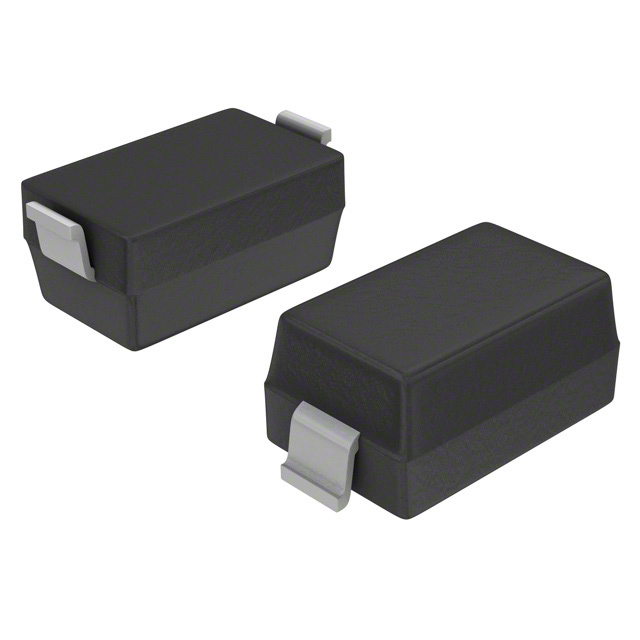BZT52C13-13
Introduction
The BZT52C13-13 is a diode belonging to the category of Zener diodes. This component is commonly used in electronic circuits for voltage regulation and protection against voltage spikes. It possesses specific characteristics, packaging, and quantities that make it suitable for various applications.
Basic Information Overview
- Category: Zener diode
- Use: Voltage regulation and protection
- Characteristics:
- Reverse breakdown voltage: 13V
- Power dissipation: 300mW
- Operating temperature range: -65°C to +150°C
- Package: SOD-123
- Essence: Provides stable voltage regulation
- Packaging/Quantity: Available in reels with varying quantities
Specifications
The BZT52C13-13 has the following specifications: - Reverse breakdown voltage: 13V - Tolerance: ±5% - Maximum reverse leakage current: 0.1µA - Maximum dynamic impedance: 20Ω
Detailed Pin Configuration
The BZT52C13-13 Zener diode has a standard SOD-123 package with two pins. The pin configuration is as follows: - Pin 1: Anode - Pin 2: Cathode
Functional Features
- Provides stable voltage output at its breakdown voltage
- Protects circuits from voltage spikes
- Low reverse leakage current
- Small form factor for space-constrained applications
Advantages and Disadvantages
Advantages
- Precise voltage regulation
- Compact size
- Low reverse leakage current
Disadvantages
- Limited power dissipation capability
- Sensitivity to temperature variations
Working Principles
The BZT52C13-13 operates based on the Zener effect, where it maintains a nearly constant voltage across its terminals when reverse biased. When the voltage across the diode reaches its breakdown voltage, it conducts current to regulate the voltage.
Detailed Application Field Plans
The BZT52C13-13 is widely used in various electronic applications, including: - Voltage regulators in power supplies - Overvoltage protection in consumer electronics - Signal clamping circuits in communication systems - Voltage reference in precision measurement equipment
Detailed and Complete Alternative Models
Some alternative models to the BZT52C13-13 include: - BZX84C13-13: Similar 13V Zener diode in SOT-23 package - 1N4742A: 12V Zener diode in axial package - MMBZ5232B: 13V Zener diode in SOT-23 package with higher power dissipation
In conclusion, the BZT52C13-13 Zener diode offers precise voltage regulation and protection in a compact package, making it suitable for a wide range of electronic applications.
[Word count: 387]
Lista 10 Vanliga frågor och svar relaterade till tillämpningen av BZT52C13-13 i tekniska lösningar
What is the BZT52C13-13?
- The BZT52C13-13 is a 13V Zener diode designed for voltage regulation and protection in electronic circuits.
What are the typical applications of BZT52C13-13?
- The BZT52C13-13 is commonly used for voltage regulation, overvoltage protection, and voltage reference in various electronic devices and circuits.
What is the maximum power dissipation of BZT52C13-13?
- The maximum power dissipation of BZT52C13-13 is typically around 300mW.
What is the operating temperature range of BZT52C13-13?
- The operating temperature range of BZT52C13-13 is usually from -65°C to +150°C.
What is the voltage tolerance of BZT52C13-13?
- The voltage tolerance of BZT52C13-13 is typically ±5%.
Can BZT52C13-13 be used for voltage regulation in low-power applications?
- Yes, BZT52C13-13 is suitable for voltage regulation in low-power applications due to its low power dissipation and precise voltage characteristics.
How does BZT52C13-13 provide overvoltage protection?
- BZT52C13-13 can be used to shunt excess voltage to ground, protecting sensitive components in the circuit from damage.
What are the key features of BZT52C13-13 for technical solutions?
- Some key features include its small form factor, high reliability, and precise voltage regulation capabilities.
Is BZT52C13-13 suitable for battery-powered devices?
- Yes, BZT52C13-13 is suitable for battery-powered devices due to its low power dissipation and ability to maintain a stable output voltage.
Are there any specific layout considerations when using BZT52C13-13 in a circuit?
- It's important to minimize lead lengths and ensure proper heat sinking to maintain the performance and reliability of BZT52C13-13 in a circuit.


